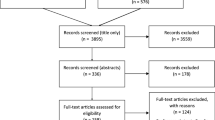Abstract
Behavioral economics (BE) has been used to study a number of health behaviors such as smoking and drug use, but there is little knowledge of how these insights relate to HIV prevention and care. We present novel evidence on the prevalence of the common behavioral decision-making errors of present-bias, overoptimism, and information salience among 155 Ugandan HIV patients, and analyze their association with subsequent medication adherence. 36 % of study participants are classified as present-biased, 21 % as overoptimistic, and 34 % as having salient HIV information. Patients displaying present-bias were 13 % points (p = 0.006) less likely to have adherence rates above 90 %, overoptimistic clients were 9 % points (p = 0.04) less likely, and those not having salient HIV information were 17 % points (p < 0.001) less likely. These findings indicate that BE may be used to screen for future adherence problems and to better design and target interventions addressing these behavioral biases and the associated suboptimal adherence.
Similar content being viewed by others
References
Charness G, Gneezy U. Incentives to exercise. Econometrica. 2009;77(3):909–31.
Heil S, Higgins S, Bernstein I, et al. Effects of voucher-based incentives on abstinence from cigarette smoking and fetal growth among pregnant women. Addiction. 2008;103:1009–18.
Barsky R, Juster T, Kimball M, Shapiro M. Preference parameters and behavioral heterogeneity: an experimental approach in the health and retirement study. Q J Econ. 1997;112(2):537–79.
Tversky A, Kahneman D. Judgment under uncertainty: heuristics and biases. Science. 1974;185(4157):1124–31.
Kahneman D, Tversky A. Prospect theory: an analysis of decisions under risk. Econometrica. 1979;47(2):263–91.
Frederick S, Loewenstein G, O’Donoghue T. Time discounting and time preference: a critical review. J Econ Lit. 2002;14:351–401.
Thaler R, Sunstein C. Libertarian paternalism. Am Econ Rev. 2003;93(2):175–9.
Loewenstein G, Brennan T, Volpp K. Asymmetric paternalism to improve health behaviors. JAMA. 2007;298(20):2415–7.
Rice T. The behavioral economics of health and health care. Annu Rev Publ Health. 2013;34:431–7.
Gebhardt W, Maes S. Integrating social-psychological frameworks for health behavior research. Am J Health Behav. 2001;25:528–36.
Janz N, Becker M. The health belief model: a decade later. Health Educ Behav. 1984;11(1):1–47.
Armitage C, Conner M. Social cognition models and health behavior: a structured review. Psychol Health. 2000;15:173–89.
Ariely D. Predictably irrational. New York: Harper Collins; 2008.
Préau M, Apostolidis T, Francois C, Raffi F, Spire B. Time perspective and quality of life among HIV-infected patients in the context of HAART. AIDS Care. 2007;19(4):449–58.
McHorney C. The adherence estimator: a brief, proximal screener for patient propensity to adhere to prescription medications for chronic disease. Curr Med Res Opin. 2009;25(1):215–38.
O’Donoghue T, Rabin M. Doing it now or later. Am Econ Rev. 1999;89(1):103–24.
Benartzi S. Save more tomorrow. New York: Pengiun; 2012.
Kahneman D. Thinking, fast and slow. New York: Macmillan; 2011.
Moore D, Healy P. The trouble with overconfidence. Psychol Rev. 2008;115(2):502–17.
Palm R, Hodgson M. After a California Earthquake: attitude and behavior change. The University of Chicago Geography Research Paper No. 233; 1992.
Coller M, Williams M. Eliciting individual discount rates. Exp Econ. 1999;2:107–27.
Cameron L, Shah M. Risk-taking behavior in the wake of natural disasters. J Hum Resour. 2015;50(12):484–515.
Arnsten J, Demas P, Farzadegan H, et al. Antiretroviral therapy adherence and viral suppression in HIV-infected drug users: comparison of self-report and electronic monitoring. Clin Infect Dis. 2001;33:1417–23.
Bangsberg D, Ware N, Simoni J. Adherence without access to antiretroviral therapy in sub-Saharan Africa? AIDS. 2006;20:140–1.
Turner B. Adherence to antiretroviral therapy by human immunodeficiency virus-infected patients. J Infect Dis. 2002;185:S143–51.
Raffa J, Tossonian H, Grebely J, Petkau J, DeVlaming S, Conway B. Intermediate highly active antiretroviral therapy adherence thresholds and empirical models for the development of drug resistance mutations. J AIDS. 2008;47(3):397–9.
Scanlon M, Vreeman R. Current strategies for improving access and adherence to antiretroviral therapies in resource-limited settings. HIV/AIDS–Res Palliat Care. 2013;5:1–17.
Fogarty L, Roter D, Larson S, Burke J, Gillespie J, Levy R. Patient adherence to HIV medication regimens: a review of published and abstract reports. Patient Educ Couns. 2002;46(2):93–108.
Acknowledgments
We would like to thank Mildmay Clinic under the leadership of Dr. Barbara Mukasa and study coordinator Tonny Kizza for their invaluable help in implementing the study. Thanks to Dr. Glenn Wagner, Dr. Arleen Leibowitz and Dr. Tom Rice for comments on an early draft, and two referees for insightful comments. Our gratitude goes most importantly to the study participants who gave so generously of their time and insights. This project was funded by the National Institute of Mental Health (NIMH), Grant Number R34MH096609. Sebastian Linnemayr is the principal investigator for the NIMH grant, and organized and coordinated the data collection efforts at the Mildmay Clinic in Kampala, Uganda. Both authors contributed equally to the data analyses and writing the paper. In memory of Esther Kawuma who made this study possible and who will be dearly missed by the RAND team.
Author information
Authors and Affiliations
Corresponding author
Rights and permissions
About this article
Cite this article
Linnemayr, S., Stecher, C. Behavioral Economics Matters for HIV Research: The Impact of Behavioral Biases on Adherence to Antiretrovirals (ARVs). AIDS Behav 19, 2069–2075 (2015). https://doi.org/10.1007/s10461-015-1076-0
Published:
Issue Date:
DOI: https://doi.org/10.1007/s10461-015-1076-0



